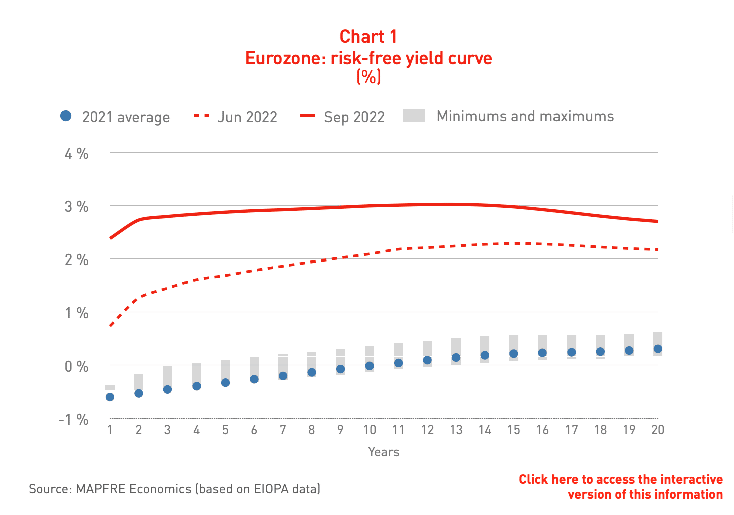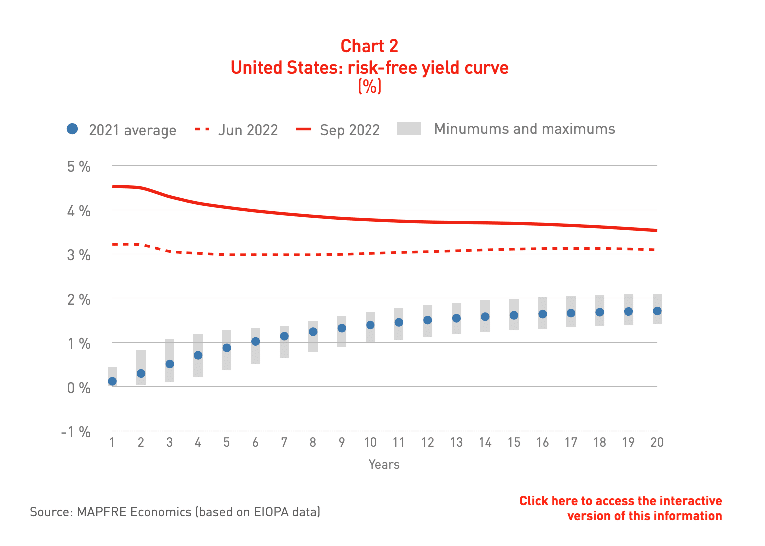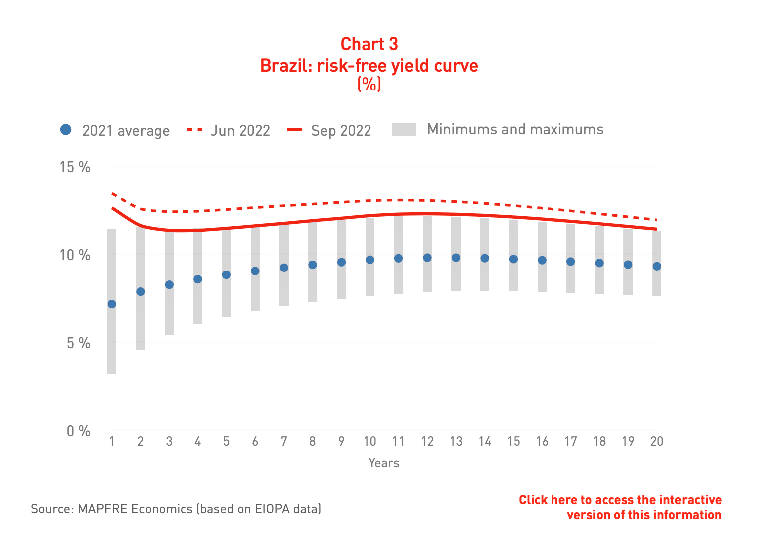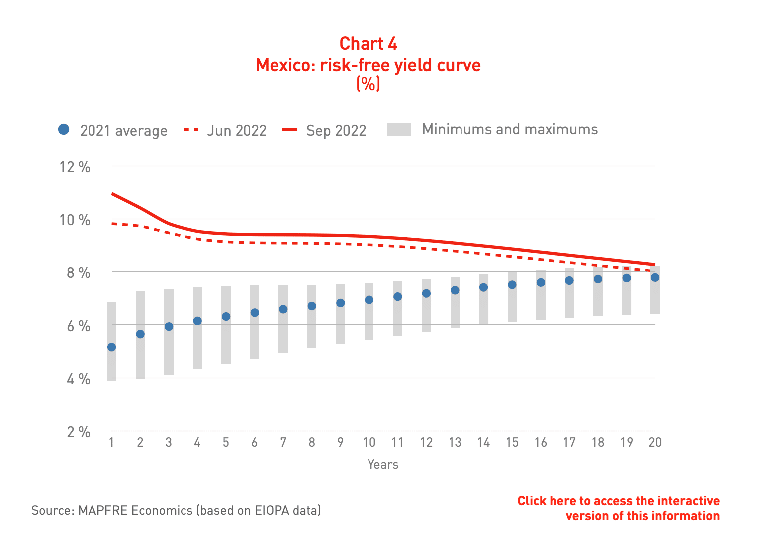Industry outlook for the insurance market (Q4 2022)
Furthermore, the Euro Stoxx 50 and S&P500 indices (and, in general, the major global equity markets) have experienced a sharp contraction since the beginning of the year by -22.9% and – 25%, respectively, at the end of the third quarter of 2022 and a spike in volatility. This situation, together with a probable entry into recession in an environment of tightening monetary policy, complicates the outlook for the operations of life insurance products in which the policyholder assumes the investment risk, which have to adapt to a new environment of falling equities and fixed income that offers higher interest rates and risk premiums more in line with issue credit risk (which is increasing).
In emerging markets, particularly in Latin America, growth estimates for some of its major economies have been revised upward for this year and downward in 2023, with forecast continuing to point to a significant slowdown driven by tighter financing conditions and the loss of household purchasing power as a result of high inflation. This is the case in countries such as Brazil and Mexico, where the improved economic performance in 2022 is being reflected in their respective insurance markets, especially in the Non-Life business, with significant growth in the first half of the year, and a remarkable recovery in all lines of business, some of them beating high inflation. In addition, the high interest rate environment resulting from the tightening of monetary policy by their respective central banks, in their fight against inflation, is driving the Life savings business (see Graphs 3 and 4). However, the insurance industry’s outlook for the coming year is complicated as a result of the economic slowdown in an environment of tightened financing conditions due to high interest rates that could weigh on growth, particularly in the Non-Life insurance market.
In Spain, the economic slowdown forecasts, the effects of inflation, and the tightening of financing conditions on household available income continue to present a complex outlook for the insurance sector. For the time being, the Spanish economy continues to be dynamic with the help of the recovery in tourism and a labor market that remains strong, seen in the performance of the insurance industry, which is experiencing significant growth in premium volumes (5.7% and 5.6% in Non-Life and Life business, respectively, in year-on-year terms up to September). However, this growth in the insurance business is not enough to offset the average inflation, which, so far this year up to October, is at around 8.8%. Moreover, this inflationary process continues to erode insurance companies’ profitability and keeps pressure on insurance prices high. The shortage of supplies that had been weighing down the automobile sector seems to be showing signs of improvement, and the auto insurance business is showing a slight recovery. Although the year-on-year growth up to September (1.4% for liability coverage and 5.1% for other coverage) is far from beating inflation.
With regard to Life insurance, the context for the savings-linked Life insurance and traditional annuities business continues to improve, as the ECB’s monetary policy tightening materializes, raising the market interest rate curve for sovereign debt and, particularly, for Spanish sovereign bonds in all maturities and offering an increasing positive term premium at longer maturities (still at levels below inflation, so that the environment of real negative interest rates continues, albeit lower than in the previous quarter).
Full analysis of the economic and industry perspectives with additional information and interactive charts on the Eurozone, Germany, Italy, Spain, the United Kingdom, the United States, Brazil, Mexico, Argentina, Turkey, Japan, China and the Philippines can be found in the report entitled 2022 Economic and Industry Outlook: Fourth Quarter Perspectives, compiled by MAPFRE Economics and available at the following link:








